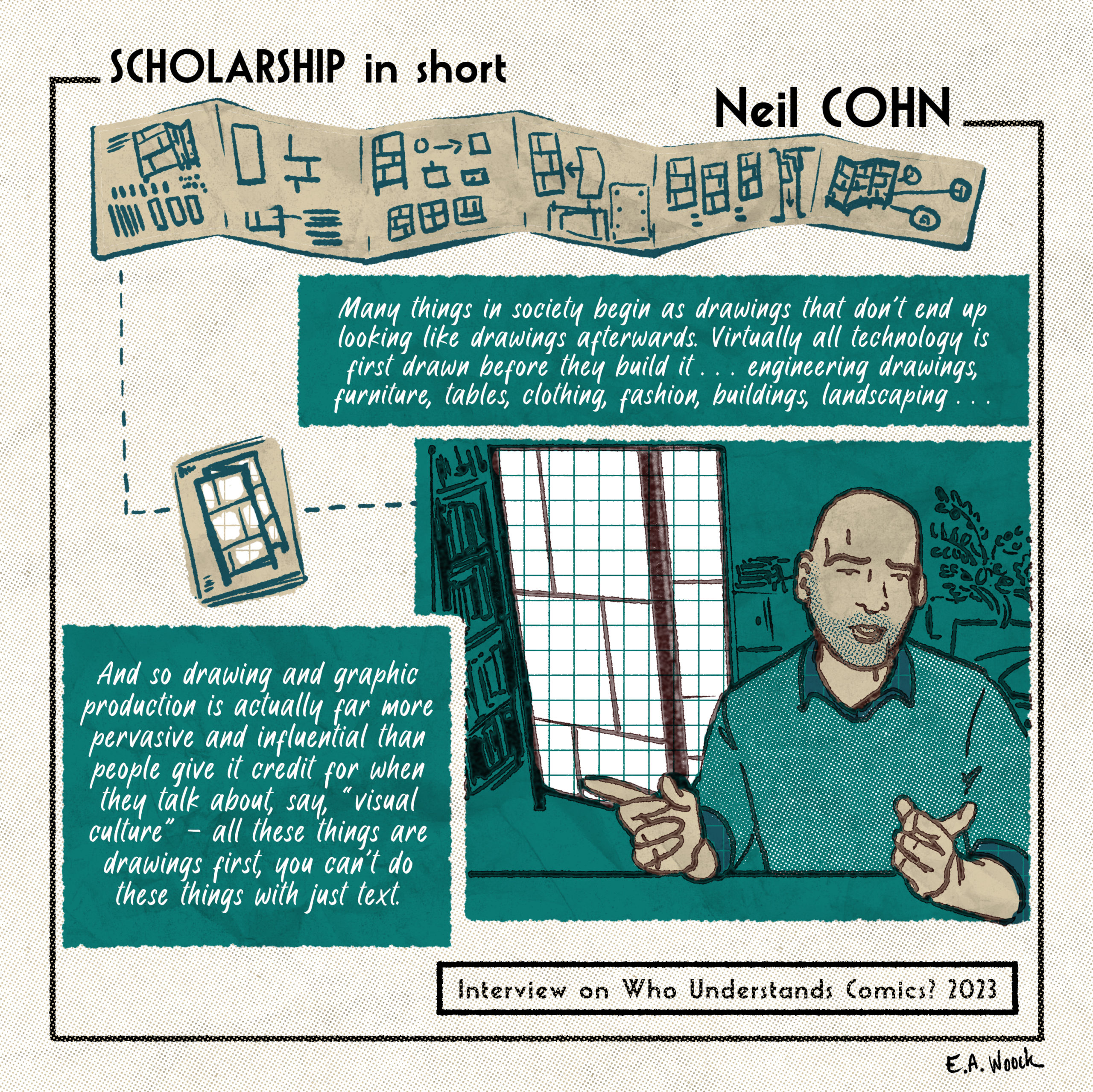Dr. Neil Cohn discusses some common misconceptions about comics, the ability to read and make comics, and how drawings are at the core of so many creations.
Listen to more
The interview audio is available here at the New Books Network podcast.
What we talked about
How many ways are sequential images or visual narratives not transparent, and trying to break down the assumption of universality (which he calls the Sequential Image Transparency Assumption or SITA).
The applications of the Visual Language Theory outside of comics studies, where awareness of VLT is needed.
Theoretical assumptions changed through drawing experience, and how Dr. Cohn uses his knowledge of creating images to inform study design and theory.
When people people read as semantic information builds up in pulses – over a page, over a spread, or over an issue.
The influence of the rise of disordered focus and attention will on comics as a popular medium, and future changes in the medium.
How he uses metrics such as ERP effects, viewing times, eye movements, etc. to investigate the comprehension of comics.
How visual language fluency develops.
About the scholar
Dr. Neil Cohn is currently an Associate Professor at the Tilburg center for Cognition and Communication at Tilburg University, in the Netherlands, Neil Cohn is an American cognitive scientist best known for his pioneering research on the overlap in cognition between graphic communication and language. His books, The Visual Language of Comics (2013) and the 2021 Eisner-nominated Who Understands Comics? (2020), establish a foundation for the scientific study of comics’ structure.
About the book
Drawings and sequential images are so pervasive in contemporary society that we may take their understanding for granted. Dr Cohn asks: how transparent are they really and how universally are they understood?
Combining recent advances from linguistics, cognitive science and clinical psychology, this book argues that visual narratives involve much greater complexity and require a lot more decoding than widely thought. Although increasingly used beyond the sphere of entertainment as materials in humanitarian, educational, and experimental contexts, Dr. Cohn demonstrates that their universal comprehension cannot be assumed. Instead, understanding a visual language requires a fluency that is contingent on exposure and practice with a graphic system. Bringing together a rich but scattered literature on how people comprehend, and learn to comprehend, a sequence of images, this book coalesces research from a diverse range of fields into a broader interdisciplinary view of visual narrative to ask: Who Understands Comics?
Main takeaway: The understanding of sequential images is more complex than what people give credit to, and is not entirely transparent requires competency to understand and decode the images.

